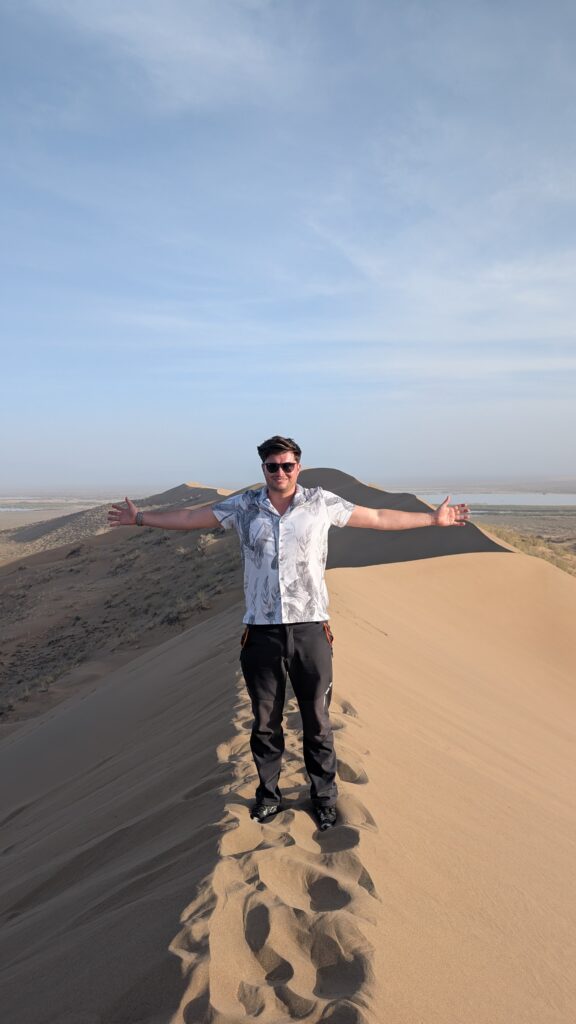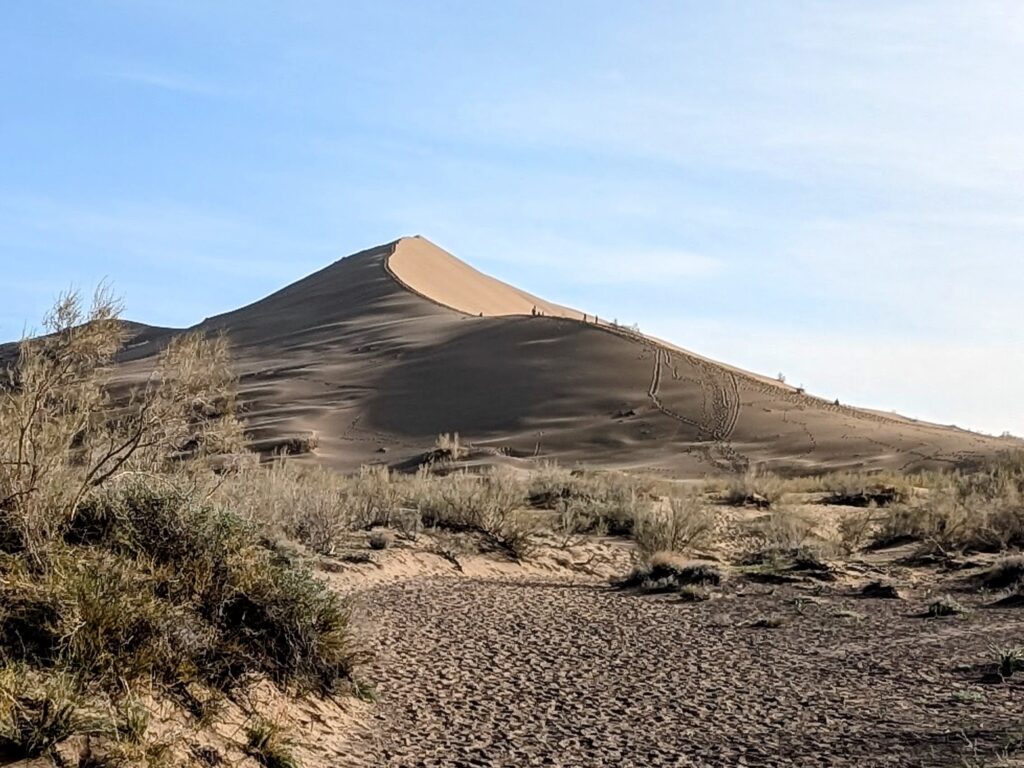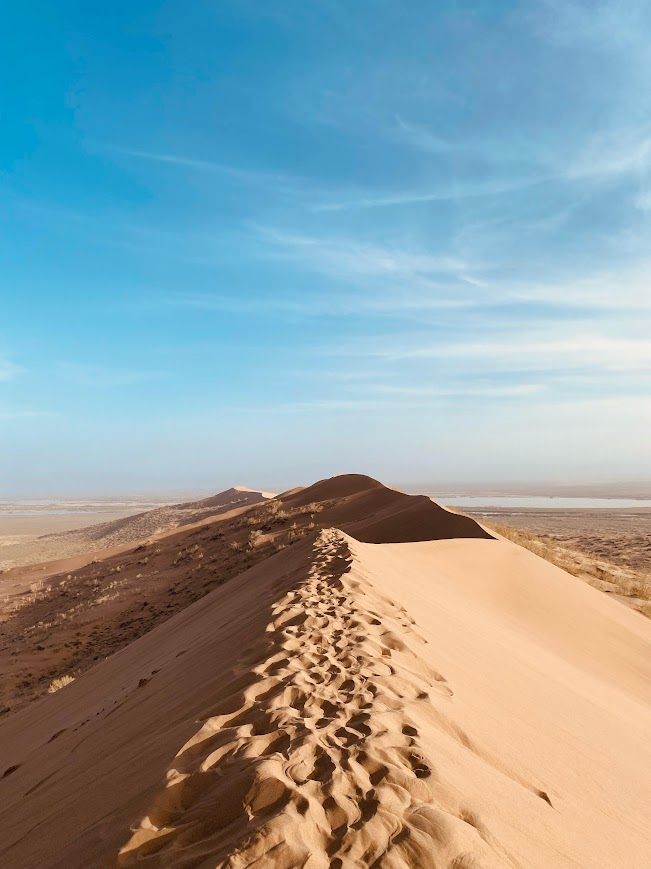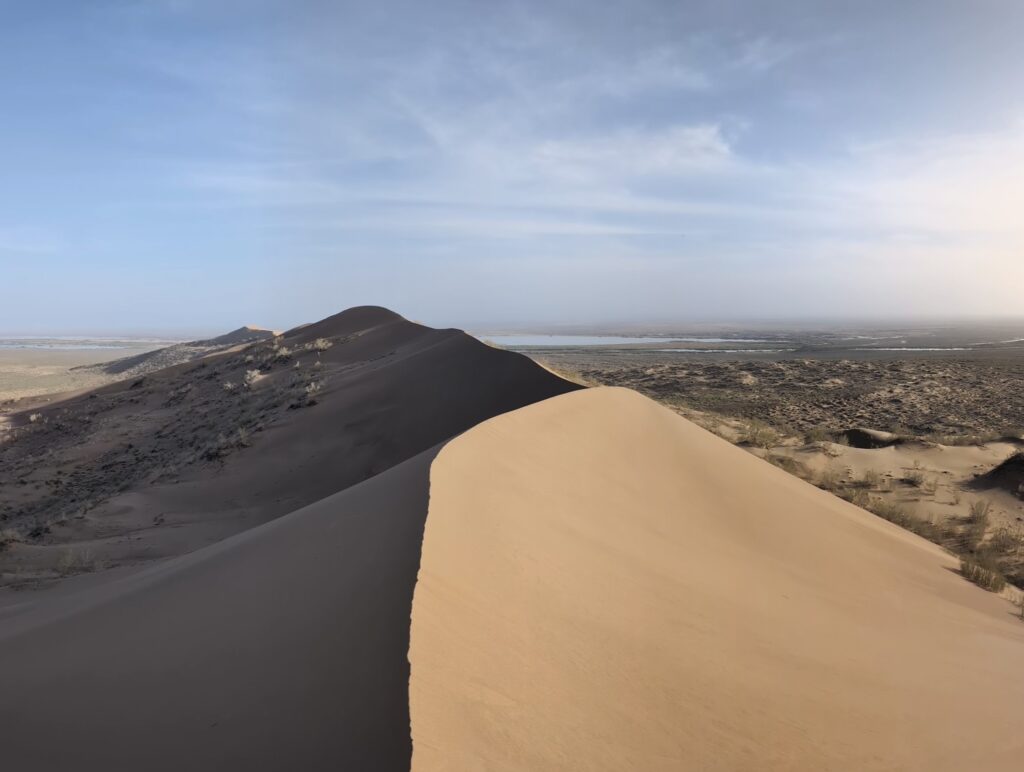Singing Dune
Serenaded by sands: The enchanting song of Kazakhstan’s Singing Dune, where geology truly comes alive.

Kazakhstan’s Singing Dune: Where Geology Sings You a Song 🎶🏜️
When I had the chance to deliver a masterclass in geotechnical software for the mining industry in Kazakhstan, I knew my adventure couldn’t end at the lecture hall. Kazakhstan’s geology was calling my name—and near the top of my must-see list was the legendary Singing Dune! This wasn’t just about sightseeing; it was about immersing myself in a landscape where the Earth’s ancient processes aren’t just visible—they’re audible. I was about to literally hear geology in action. 🌍✨
First Impressions: A Mountain of Sand in the Steppe 🏞️
Driving through Altyn-Emel National Park felt like traversing an endless sea of steppe, the horizon shimmering with heat. Then, through a haze of dust kicked up by one of the only other vehicles on the road, the Singing Dune appeared—like a mirage made real. Up close, it was jaw-dropping: a towering ridge of sand, soaring 150 meters high and stretching nearly three kilometres. I arrived around 4 PM, knowing I had only a precious hour before needing to leave and exit the park before closing. The anticipation made every moment feel even more special.


Feeling the Geology: The Story Beneath My Feet 🏔️🪨
I kicked off my shoes and began the climb barefoot, each step sinking into the fine, cool sand. As a geologist, I couldn’t help but marvel at what lay beneath my feet. Thousands of years ago, fierce winds swept across the Ili River valley, carrying quartz sand from the riverbanks and plains. The surrounding Big and Small Kalkan mountains acted as natural barriers, trapping this sand in place. The result? A rare, stationary dune that has barely shifted in centuries, despite the relentless winds.
Running my fingers through the sand, I could feel its story—grains of nearly pure quartz, polished smooth by time. This tiny detail—the perfect size and shape of each grain—is what gives the dune its voice. In geology, we often think in grand scales: mountains, volcanoes, eons. But here, it’s the small things that matter most. The dune sings because of these minute details.
A Natural Symphony: The Science Behind the Song 🎵✨
As I climbed, the wind and my footsteps sent mini avalanches of sand cascading down the slope. That’s when it happened: the dune began to sing. The sound was a deep, resonant hum—like a distant jet engine, but somehow more primal. I wish I could share a recording, but my breathless excitement from the climb drowned out the dune’s song!
Only about 30 dunes in the world can “sing” like this, each with its own unique voice. The phenomenon requires the perfect combination of sand grain size, dryness, and slope. Here’s what happens: the dune has a compact, wet sand layer beneath a dry upper layer. When the sand is disturbed—by wind, footsteps, or even animals—the upper layers slip and slide, creating mini-avalanches. The upper layers, with less friction, move faster than the lower ones, transmitting periodic jolts to the wet layer below. This causes the wet layer to vibrate, producing that iconic humming sound. That’s why you won’t hear the dune sing in wet weather—the delicate balance is disrupted.
Standing atop the dune, I couldn’t help but imagine the countless people over the past 5,000 years who have listened to the same ancient song. Some attributed it to the devil snoring, while others believed Genghis Khan and his horde were buried beneath the sands, the singing being the Khan’s soul telling his descendants stories of his greatness.
Final Thoughts: The Earth’s Hidden Music 🎶💖
As the sun dipped lower, I felt a profound connection to this place. The Singing Dune isn’t just a geological curiosity—it’s a living monument to the subtle power of nature. My visit was a beautiful reminder: the Earth is full of surprises, and sometimes, if you’re really listening, you can hear its hidden music—all because of the smallest details.
Would I go back? In a heartbeat. Next time, I’d pack a picnic, soak in the breathtaking views, and let the sands serenade me through an unforgettable meal. If you ever get the chance, don’t just visit—listen.

🌟 Quick Facts & Travel Tips
- Location: Altyn-Emel National Park – Buy your ticket at the park office in Basshi, then drive about an hour to the dune.
- Height: Up to 150 meters
- Length: About 3 kilometers
- Unique Feature: Emits a deep, humming sound when dry sand moves
- Park Hours: Daylight only; overnight stays at the dune are not allowed